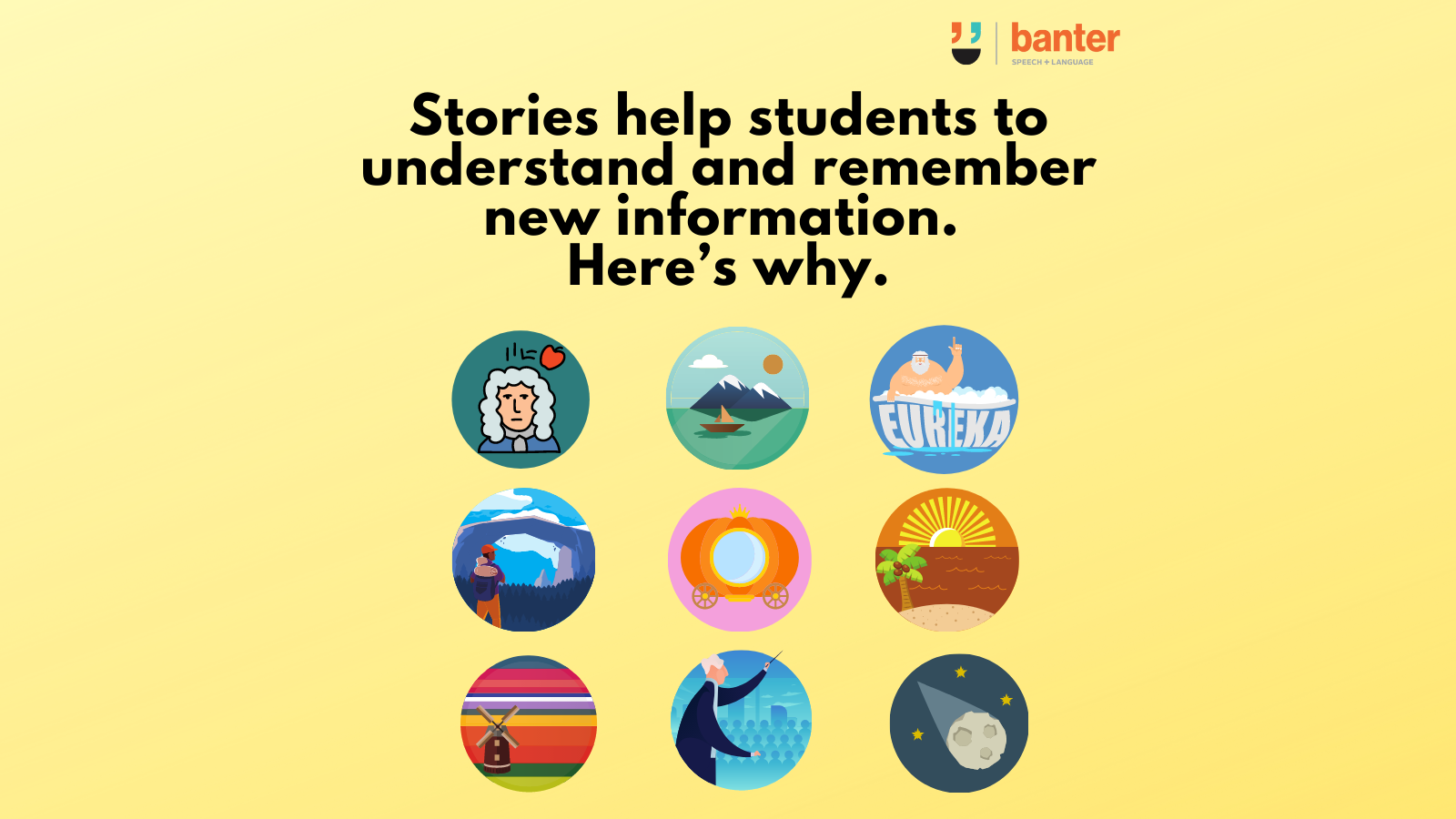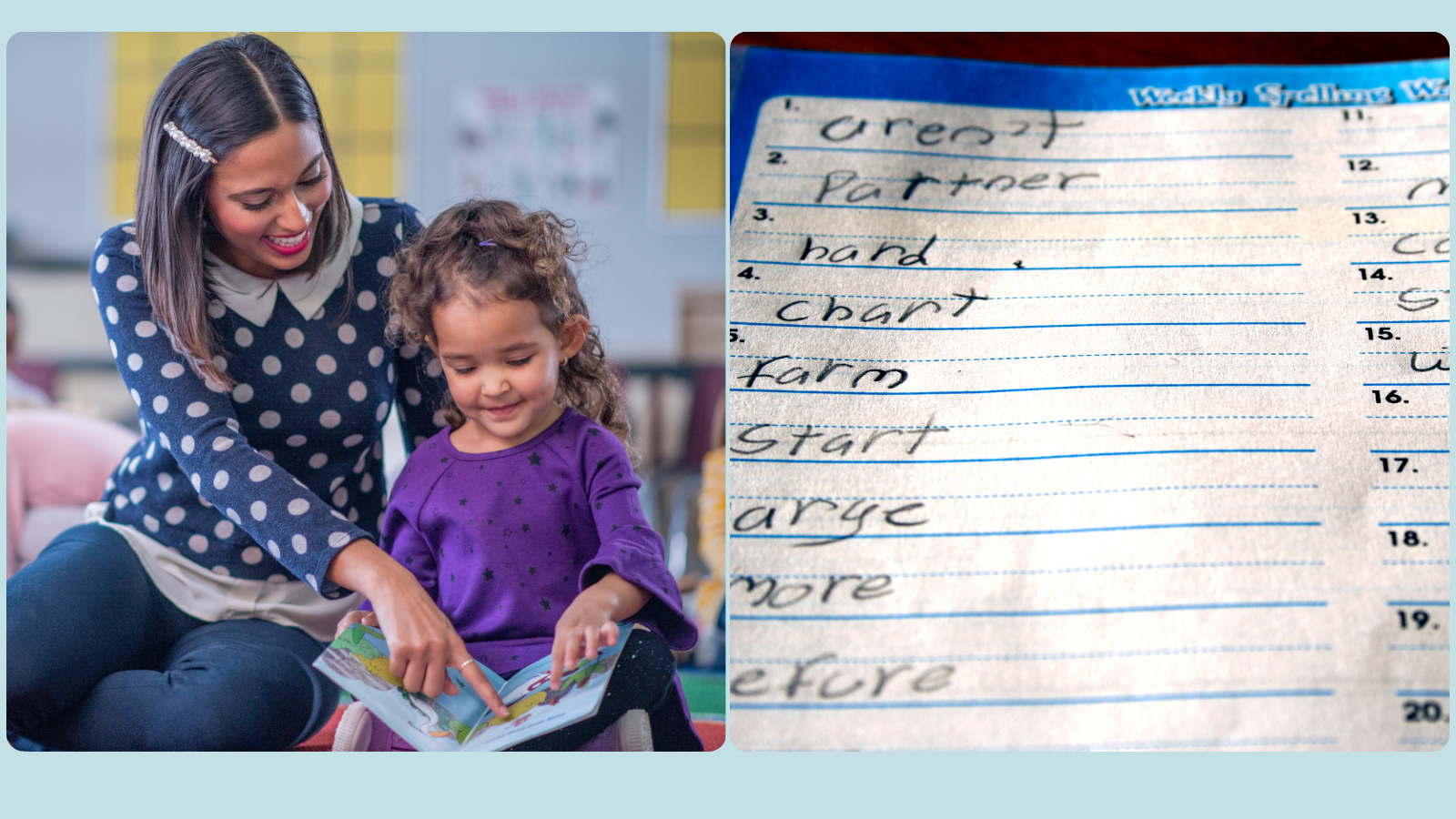Stories help students to understand and remember new information. Here’s why.
When I think about gravity, the first thing that pops into my head is an image of an apple falling off the tree and onto Isaac Newton’s head. For water displacement, it’s Archimedes leaping out of a bathtub and running home naked through the streets shouting “Eureka!”. When I hear Beethoven’s Symphony No. 9, I imagine the almost completely deaf composer continuing to wave his arms furiously, well after the orchestra had finished playing.
Many historians question whether these events occurred. It’s likely that they didn’t – at least not in the way I read about them at school. But stories like these helped me to learn about physics, maths, and music. And I still remember them decades on.
If I go back to some of my earliest memories, I realise that I learned many life lessons being told (and later, reading) stories and fables about the importance of things like perseverance and patience, kindness, telling the truth, the importance of giving to others, flexibility and inventiveness under pressure, and avoiding greed. These were stories I was keen to pass on to my own children as soon as they were old enough.
Even when I think about complex topics, like the causes of World War I, it’s again the stories that come first. An image of the doomed Archduke Franz Ferdinand and his wife sitting in that black car on the streets of Sarajevo is much easier to summon than more abstract thoughts about the complex interplay of European colonialism, nationalism, and the disruptions caused by industrial, scientific and political revolutions. This is both the advantage and drawback of stories: they are easier to remember, but can oversimplify events and ideas, and lead to bias when a good story trumps the truth.
Reading is one of the best ways we have to learn new information. True, we learn from non-fiction. But stories – also known as narratives – are more easily understood and recalled.
Why?
Stories and essays differ in purpose and structure
Written narratives include short stories and novels. They are usually written to entertain readers, and follow a familiar structure, which is known as “story grammar”. Story grammar includes:
- setting: the story’s time and place;
- plot: the things that happen in the story, which centre around the goals of the main character (also known as the “protagonist”) and which drive character actions and emotional responses. Most commonly, events progress through a chronological order of goal-centred events;
- characters with conflicting goals: the goals of the different characters conflict, creating a tension that builds to a climax; and
- resolution: in which the goals of the protagonist are either achieved or remain out of reach.
Many visual aids exist to help students to understand story grammar. Here’s the one we use:
Essays, textbooks, non-fiction articles, and manuals are all examples of expository texts. “Expository” means “intended to describe or explain something”. Expository texts are written to inform readers, communicating information and ideas about a specific topic. They often contain descriptions, definitions, ideas, and explanations that are structured and supported by arguments. Their structure often looks like a pyramid, with the theme or topic introduced first (at the pyramid tip) and and the theme subsequently elaborated at length.
So why are stories easier to understand and to remember than essays?
We don’t know for sure. But there are a several good theories:
- In their structure, stories resemble our everyday lives. In parallel with the structure of stories, most of us experience life in the “real word” as:
- a series of events that happen for a reason in chronological order (see more about sequencing as an aid to comprehension here);
- organised around personal goals; and
- presenting us with a series of obstacles to achieving our goals, which we struggle with and either overcome or fail to achieve, resulting in emotional experiences.
- The content of stories maps closely to our everyday experiences. Even if set in space, or fantasy worlds, stories often focus on social relationships and the conflicts that inevitably result from conflicting goals. Most stories involve themes of familiar topics for most humans, including friendship, conflict, love, and separation, and we all have some experience with these topics. Most stories use the vocabulary of traits, conflict and emotions, which mirror how we communicate our own experiences.
- Most of us are more familiar with the structure and at least some of the content of stories. As such, we have better prior knowledge of what to expect from a story. We can generate more knowledge-based inferences about stories, which aids our comprehension of them. For example, if we read a story about a boy who is rejected by his classmates and has to eat his lunch alone, most of us will infer from our own experiences of rejection that the boy feels hurt and lonely, without the author needing to spell it out for us. You can read more about inferencing here and here.
- Many of the things we read in expository texts are new concepts: things that, by definition, we don’t know much about. We can’t rely as much on our general knowledge, and our understanding will depend on our knowledge of the specific topic or domain.
- Stories are a prominent part of human history across cultures. Before reading and writing, oral storytelling was the primary mode of communication. It still is in many cultures. We use stories to retain and transmit information from generation to generation. Some scientists think that stories and storytelling gave our early ancestors an evolutionary advantage, including the ability to share survival-dependent information across generations, e.g. about poisonous plants, dangerous places, and predators. (You can read more about this type of “primary knowledge” here.)
- We are exposed to stories from the very beginning – from early childhood, and sometimes from before we have the ability to speak. Stories are the most common type of text encountered during early schooling, with some students being introduced to expository texts as late as at the ages of 8-9 years. (As an aside, that’s one reason I recommend introducing and using more nonfiction books to preschoolers and younger students here.)
- Stories may be easier to remember because they provoke emotions. As we read stories, we experience and mentally represent the emotional states of the characters. Emotional events are more deeply imprinted on the mind, and can create “flash-bulb” memories.
New research confirms that stories are easier to understand and recall than essays
In 2021, Raymond A. Mar and colleagues published a meta-analysis of studies looking at memory and comprehension in stories versus expository texts. Most of the information in this article comes from this paper (see citation below).
Based on 75 studies and data from more than 33,000 participants, the researchers confirmed that stories were more easily understood and recalled than essays. In other words, they found that people have an easier time understanding and recalling information presented in a story compared to that presented in an essay.
Bottom line
When teaching students, we should think about the benefits of introducing new information in stories to exploit the narrative advantage. But:
- we should recognise that narratives will not always be appropriate or efficient – particularly when the purpose of the text is to inform people who already have significant domain or subject matter knowledge on the topic. But storytelling techniques can still liven up a dry topic and make it easier for readers to understand. Using techniques common in mixed genres, like narrative journalism, for example, may give us the best of both worlds.
- we must be wary of narrative fallacy, the tendency to make connections between things and to impose our imaginations on arrangements of data, and where we see patterns where none exist. This is especially important in science, where correlation does not always mean causation, and where we are all vulnerable to being misled by stories.
Main source: Mar, R.A., Li, J., Nguyen, A.T.P., & Ta, C.P. (2021). Memory and comprehension of narrative versus expository texts: A meta-analysis. Psychonomic Bulletin & Review, 28: 732-749.
Related articles:
- Five ways to boost your child’s oral language and reading comprehension skills with sequencing
- Help your child to fill in the gaps, join the dots, and read between the lines! (Improve inferencing skills for better reading and language comprehension)
- Help your child to make inferences when reading
- For struggling school kids, what’s the difference between seeing a speech pathologist and a tutor?
- Read non-fiction books to your late talkers and preschoolers: here’s why
- Let kids choose their own adventures

Hi there, I’m David Kinnane.
Principal Speech Pathologist, Banter Speech & Language
Our talented team of certified practising speech pathologists provide unhurried, personalised and evidence-based speech pathology care to children and adults in the Inner West of Sydney and beyond, both in our clinic and via telehealth.








